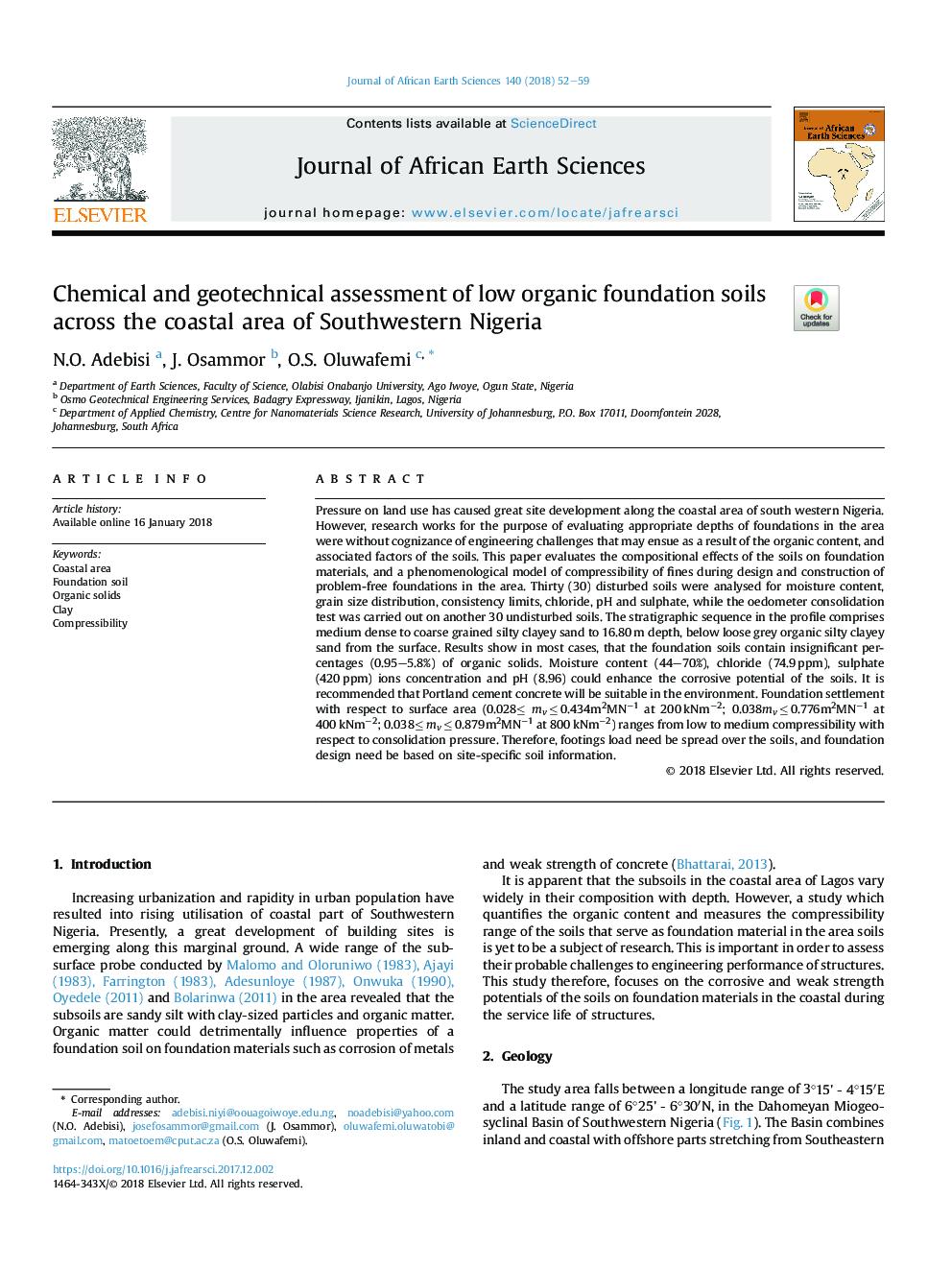| Article ID | Journal | Published Year | Pages | File Type |
|---|---|---|---|---|
| 8913543 | Journal of African Earth Sciences | 2018 | 8 Pages |
Abstract
Pressure on land use has caused great site development along the coastal area of south western Nigeria. However, research works for the purpose of evaluating appropriate depths of foundations in the area were without cognizance of engineering challenges that may ensue as a result of the organic content, and associated factors of the soils. This paper evaluates the compositional effects of the soils on foundation materials, and a phenomenological model of compressibility of fines during design and construction of problem-free foundations in the area. Thirty (30) disturbed soils were analysed for moisture content, grain size distribution, consistency limits, chloride, pH and sulphate, while the oedometer consolidation test was carried out on another 30 undisturbed soils. The stratigraphic sequence in the profile comprises medium dense to coarse grained silty clayey sand to 16.80â¯m depth, below loose grey organic silty clayey sand from the surface. Results show in most cases, that the foundation soils contain insignificant percentages (0.95-5.8%) of organic solids. Moisture content (44-70%), chloride (74.9â¯ppm), sulphate (420â¯ppm) ions concentration and pH (8.96) could enhance the corrosive potential of the soils. It is recommended that Portland cement concrete will be suitable in the environment. Foundation settlement with respect to surface area (0.028⤠mvâ¯â¤â¯0.434m2MNâ1 at 200â¯kNmâ2; 0.038mvâ¯â¤â¯0.776m2MNâ1 at 400â¯kNmâ2; 0.038⤠mvâ¯â¤â¯0.879m2MNâ1 at 800â¯kNmâ2) ranges from low to medium compressibility with respect to consolidation pressure. Therefore, footings load need be spread over the soils, and foundation design need be based on site-specific soil information.
Related Topics
Physical Sciences and Engineering
Earth and Planetary Sciences
Geology
Authors
N.O. Adebisi, J. Osammor, O.S. Oluwafemi,
